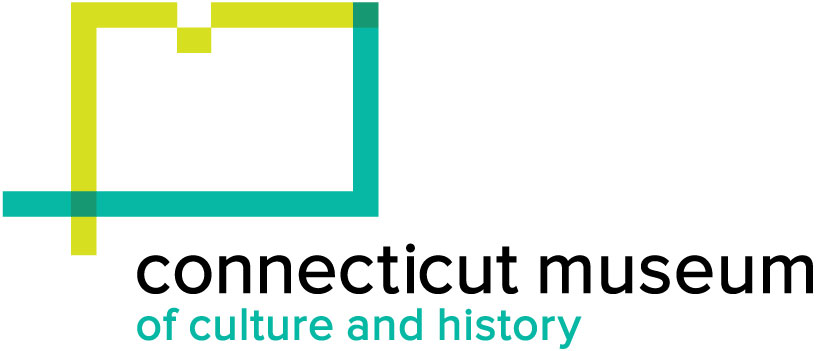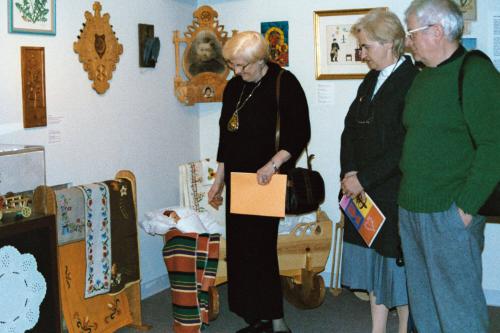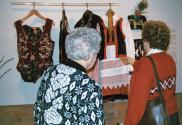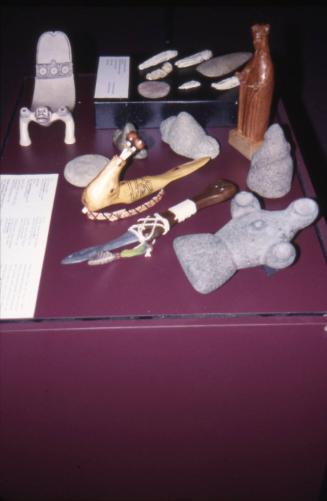Exhibit Display: Polonia w Connecticut: Polish American Traditional Arts in Connecticut
SubjectPortrait of
Lottie Pozniak
SubjectPortrait of
Marek Czarnecki
(Polish-American)
SubjectPortrait of
Ewa Gierat
Date2001
Mediumborn digital images; photographic prints
ClassificationsGraphics
Credit LineConnecticut Cultural Heritage Arts Program collections
CopyrightIn Copyright
Object number2015.196.241.13-.17
DescriptionPhotographs of the "Polonia w Connecticut: Polish American Traditional Arts in Connecticut" exhibit installation and visitors.
2015.196.241.13: Born digital image of three people viewing the Polonia w Connecticut exhibit installation. One woman holds the exhibit catalog.
2015.196.241.14: Photograph of three people viewing the Polonia w Connecticut exhibit installation. One woman holds the exhibit catalog.
2015.196.241.15-.16: Photographs of two people viewing the Polonia w Connecticut exhibit installation. Lottie Pozniak is on the left.
2015.196.241.17: Photograph of Marek Czarnecki and Ewa Gierat viewing the Polonia w Connecticut exhibit installation.
NotesSubject Note: "Polonia w Connecticut: Polish American Traditional Arts in Connecticut," an exhibition describing the arts and customs of this large community in Connecticut, was developed by CCHAP in collaboration with members of the Polish community, and was displayed in the gallery of the Institute for Community Research (ICR) from December 7, 2000 to May 2001. The project aimed to bring forward the enduring traditions of Polish American communities in Connecticut by conducting fieldwork in these communities, by collecting art works which express community traditions which still are practiced, by presenting an exhibition and related programming to the public and for schoolchildren, and by developing closer ties with the Polish community as ICR was situated in the heart of Hartford’s historic Polish neighborhood. Project partners included the Polish National Home, Ss. Cyril and Methodius Church and School, the Polish Cultural Club of Greater Hartford, the Polish Studies Department at Central Connecticut State University, and a number of community-based local Polish artists and collectors. Marek Czarnecki, an accomplished Byzantine iconographer and scholar from the Bristol Polish community, served as co-curator and gave a gallery talk on March 3, 2001. The project produced a catalogue of exhibit texts and information in both English and Polish. At the exhibit opening, performances were given by the Gwiazdeczki Dancers, a longstanding folk dance group from Saints Cyril and Methodius School and Parish, Hartford, and Wladyslaw Furtak, a singer, storyteller and woodcarver from the Gorale region of Poland who resides in Ansonia. Project funders included the Edward T. and Ann C. Roberts Foundation, the Connecticut Commission on the Arts, the National Endowment for the Arts, and the Polish Studies Dept. of CCSU. 2015.196.241.13: Born digital image of three people viewing the Polonia w Connecticut exhibit installation. One woman holds the exhibit catalog.
2015.196.241.14: Photograph of three people viewing the Polonia w Connecticut exhibit installation. One woman holds the exhibit catalog.
2015.196.241.15-.16: Photographs of two people viewing the Polonia w Connecticut exhibit installation. Lottie Pozniak is on the left.
2015.196.241.17: Photograph of Marek Czarnecki and Ewa Gierat viewing the Polonia w Connecticut exhibit installation.
The exhibit was timed to coincide with the annual "szopka contest" in late November when students from schools in New Britain and Hartford would create szopki - traditional Polish nativity scenes - then bring them to Hartford's Polish National Home on Charter Oak Avenue where a panel of judges awards prizes for excellence and creativity during the annual szopka festival. Some of these szopki were included in the CCHAP exhibit. Traditional art forms such as papercutting (wycinanki), painted eggs (pisanki), icons, embroidery, harvest ornaments, Christmas ornaments, and folk costumes all made by Connecticut Poles were featured, and the exhibit also included handmade altars and figures made for devotional use in people's homes, a common Polish practice. The exhibit demonstrated the beauty, usefulness, and continuation of traditional arts specific to the large Polish-American community in Connecticut, while also noting the ways traditions become altered in a new world setting.
Additional materials exist in the CCHAP archive for both of these projects and the artists involved.
Cataloging Note: This project was made possible in part by the Institute of Museum and Library Services MA-245929-OMS-20.
Status
Not on view2000-2001 December-March
Glaisma Pérez Silva
July 1999
Ilka Robles
July-September 2003
2001 May 7
2000 November
Ilka Robles
June-August 2003


















